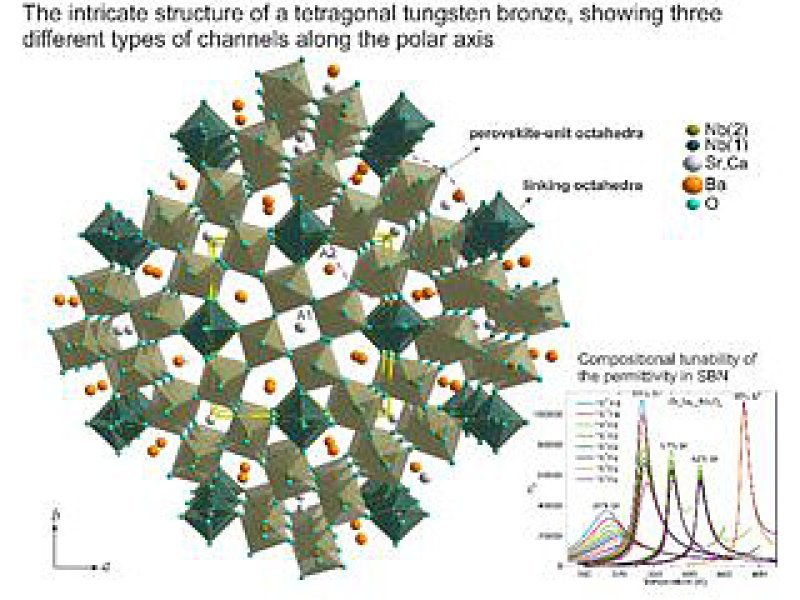High frequency dielectric response of uniaxial relaxors
Advisor: Elena Buixaderas (FZU CAS)
Funding: base scholarship
Contact: buixader@fzu.cz
In relaxor ferroelectric materials, which possess a high degree of disorder, chemical substitution is able to produce distortions in the crystal lattice that enhance the dielectric properties and can eventually lead to multiple functionalities [1, 2]. Because of the range of the involved length scales (0.1 nm–0.1 mm), ultra-broadband dielectric spectroscopy combined with Raman scattering is an excellent way to reveal the excitations responsible for the dielectric response and the origin of the ferroelectric and relaxor behaviour.
The materials we want to study are uniaxial relaxors, where the relaxor behaviour (dispersion of the permittivity maximum over frequency and temperature) can be tuned into a proper ferroelectric state, with a typical ferroelectric phase transition. These materials belong to a special structural family called tungsten-bronzes and, in these structures, unconventional shifts of cations and oxygen atoms occur [2, 3]. Their contribution to the spontaneous polarization is not obvious [3], therefore a careful study of phonons, correlating the dynamics of atoms with the microscopic origin of ferroelectricity is needed. The origin of relaxations observed below phonon frequencies is still unclear, and there is still a need of experimental data at high frequency ranges, mainly in the GHz‐THz range, where different entities contribute to the dielectric response in an anisotropic way.
We offer a PhD position for a student to work with the supervisor on ferroelectric uniaxial relaxor materials using ultra broad band spectroscopy (10 mHz – 100 THz) and Raman scattering in an extremely wide temperature range and under high electric fields, in order to unveil the origin of the relaxor and ferroelectric behavior in the challenging family of the tetragonal tungsten bronze structures.
Literature:
[1] R.A. Cowley; S.N. Gvasaliya; S.G.
Lushnikov; B. Roessli; G. M. Rotaru, Relaxing with relaxors: a review of relaxor
ferroelectrics, Adv. Phys. 60, 229 (2011).
[2] A. Rotaru, A.J. Miller et al,
Towards novel multiferroic and magneto-electric materials: dipole stability in
tetragonal tungsten bronzes, Phil. Trans. Roy. Soc. A 372, 20120451
(2014).
[3] E. Buixaderas, M. Kempa. Š. Svirskas, C. Kadlec, V. Bovtun, M.
Savinov, M. Paściak and J. Dec, Dynamics of mesoscopic polarization in uniaxial
tetragonal tungsten-bronze (SrxBa1-x)Nb2O6, Phys. Rev. B 100, 184113 (2019).


